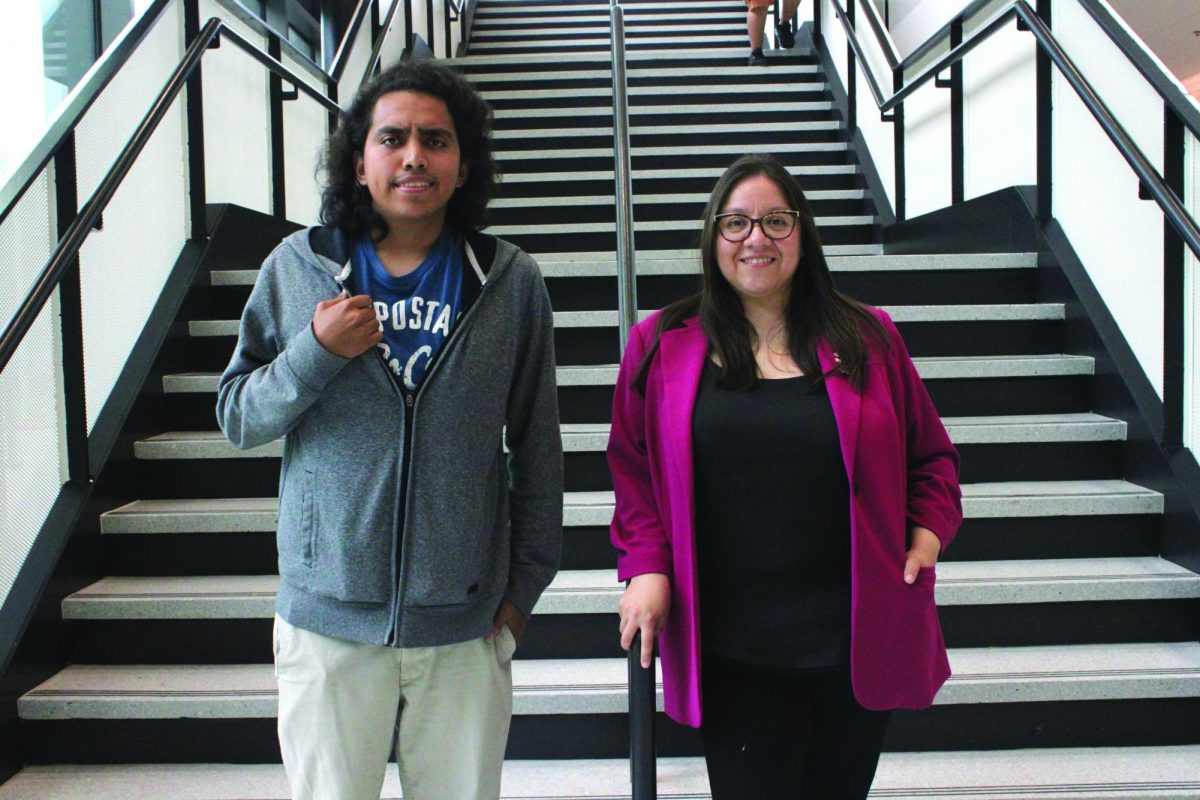By Liritze Pedroza-Ortiz, Staff Writer
Crowded parking lots aren’t the only side effect of the college’s record-breaking enrollment numbers this year. Classroom and meeting space are also at a premium.
The college’s Testing Center has outgrown its space and will be forced to expand into C-118 in the spring, which means the math classes held there now must be relocated.
At the SGA’s Oct. 25 meeting, Quality Enhancement Plan Coordinator Kyle Barron said those changes also mean the Harvester Room in C-142 will now be used as a classroom.
Therefore, clubs will no longer have a designated meeting room and will have to find other places to meet.
“We control [the Harvester Room], and the clubs really like that room,” Student Life Program Development Specialist Rita Bregola said, adding that there is a lot of flexibility with the current meeting schedule. “Especially if it’s short notice, I say, ‘Yeah, go ahead, fill out the paperwork. If it is free you can go in it.’ Now, using a different room, we cannot do this anymore.”
Although it may not be the ideal situation, Testing Director Paul Goertemiller said the busy Testing Center desperately needs more room to meet testing demands.
“Between proctor tests, TSI testing and the new pre-assessment activity, the Testing Center is busy nearly all year,” he said.
He said the new pre-assessment activity (PAA) alone is a cause for concern because it is not timed.
“The Accuplacer took about three hours. For this test we expect students to take about four and half hours to complete the test,” Goertemiller said. “Students can spend all day here if they’d like.”
Currently, there are 27 computers in the Testing Center and 10 in the PAA office.
“That is not nearly enough to handle the demands,” Goertemiller said. “Fifty computers is a realistic goal, and I’ll take whatever I can get. We will do the best with what we have.”
Room Coordinator Ruth Hale said the room changes will benefit the Testing Center but there is still work to do when it comes to scheduling spring classes.
“It’s going to be a challenge to find a slot for those classes that will work around other rooms within the existing spring schedule,” she said.
Scheduling may also be a conflict for the clubs, who have been told that C-135 may be an option for their frequent meetings.
Hale said the college has only a few multipurpose rooms including G-101/102, S-100/101 and C-135.
“It is available time to time, but once the semester gets going it’s usually busy,” she said.
Although clubs may have access to a bigger room, some members expressed concern about losing C-142.
Video Game Club member Ibn Thompson said his club uses the Harvester Room every Friday and does not like the idea of moving.
“It would be a bit of a blow,” Thompson said.
Baptist Student Ministry Director Andrew Simmons, whose club uses the room every Wednesday, said he didn’t mind the change as long as they had a room to meet in.
“A room is just a room,” Simmons said. “As long as they can reassign us somewhere else that’s not too far away, to where students won’t have to walk a half mile to get to, it will be fine.”
However, both agreed that the small space in C-142 was a problem.
Simmons said the club often rearrange tables and chairs during their meetings to eat, play games and have Bible study. A larger room would allow them to have a different spot for each activity.
Thompson also saw the potential benefit of a larger room.
“If we did get C-135, that would be nice,” he said. “We would have more room to interact, and we’d be able to bring more systems and have more fun. One problem we have with the room we are in now is that when we do get all of our active members, sometimes it gets hard to move around.”
Emily Niño, the Communications Club’s vice president of programs, said the club used the Harvester Room at the beginning of the semester, but wanted a bigger room for members.
“Right now we have roughly 28, 29 [members], and that doesn’t include guests that they might bring or guest speakers they might have,” she said.
Because C-135 is much larger than the usual meeting space, Bregola said dividing and sharing the room is also a possibility.
“We have clubs that want to meet at the same time,” she said. “Having a room that’s bigger, we can divide it and put two or three clubs in a bigger room.”
However, some clubs were not excited about sharing the room.
Niño said the Communications Club likes to get its members involved by having them participate in ice-breaking games. The noise could be an issue if another club was sharing the room.
“I think it would be better if we didn’t have to share,” Niño said. That way we have the privacy of our own room.”
Dance Tank President Jamal Hargrove agreed that sharing the room might be distracting.
“When it comes to not dancing, but promoting, this room [C-142] is good for meetings and more serious talk,” Hargrove said. “[Sharing] is counterproductive. … You can’t really focus.”






